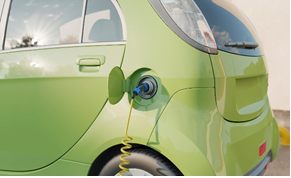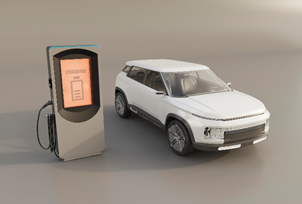Powering the Electric Vehicles Right
The transportation industry is experiencing changes, which are fueled by the extraordinary growth in Battery Electric Vehicles (BEVs). However, the range of concern still arises in regards to the driving range, the upfront cost, or the charging infrastructure. Contrary to the dominant form of transport, BEVs are ecologically minded, coupled with breaking technologies and incentives from the government, which makes BEVs a big disrupter of the traditional auto industry.
Market Overview
The BEVs market is growing attributing to the rising demand for Electric Vehicles (EVs) and the development of EV technology globally. The market demonstrates a strong potential for rapid development. The world EV battery market is expected to grow at a significant CAGR of 19.9% by 2031. In addition to the ever-growing attention to the green solution of clean and quick electrification to fight the global climate catastrophe, governments across the world are supporting electrification, as well as the rise of ecological problems is pushing the transition to clean mobility. Major automakers are thus increasing research and production of vehicles equipped with longer ranges and increased battery capacities, which in turn is bound to raise the global demand for electric vehicle batteries. The market structure is predominated, by four leaders namely Panasonic, BYD, CATL, and LG Energy Solutions. EV vehicle manufacturers are tightening their deals with battery manufacturers to secure the supply of batteries creating more competition in this market. This includes an analysis of the demand and supply position in the EV market as well as the current scenario and finally, aspired future trends. Interestingly, the EV development circle has not just witnessed advancements in battery technology, but also changes in battery chemistry, energy density, and battery pack size that lead to decreased costs and increased production efficiency.

The Future Looks Bright: Applications Driving Innovation in the Battery Electric Vehicle Market
The electric vehicle battery market has various applications which result in its growth. Both passenger cars and commercial vehicles are the largest application segment of the electric vehicle battery market. Electric scooters and bikes have not only been added on in developed countries but the same is also true in developing nations where there is a higher demand for these batteries. Additionally, the developments where zero-emission is from public transportation to freight delivery have also seen the rise of electric buses and transportation companies further expanding the market. Interestingly, there are applications of electric vehicle batteries not only for stationary energy storage systems like grid-scale and residential storage but also for the integration process of renewable energy sources. Those applications might provide the manufacturers with new incomes and they will be useful for the grid operators. For now, the upcoming trends for this technology might be electric trains, boats, and aircraft which possibly with their slipstream will help the planet to get rid of important sources of greenhouse gases. The development progresses and the cost effects result in increasing the electric car battery applications more and more, remaining as a cornerstone in alternative transportation and renewable energy systems transition.

Next-generation solid-state batteries provide electric drive units with a longer life cycle, more range, less weight, and much faster charging which is about ten times faster than conventional batteries. Toyota, a big automaker, expects to be able to install solid-state batteries into its real-world applications by 2027-2028, providing a maximum distance of driving.
Both lithium-ion batteries and graphite anodes are under internal adaptation. Companies domiciled there are dumping graphite anodes with silicon or embedding them in silicon nanowires to drive up energy density and considering introducing lithium salt to the electrolyte to suppress flammability. Sodium battery technology, which shall substitute costly lithium with abundant and affordable sodium, is under development to replace lithium-ion and recent incredibly interesting advances based on this technology may result in practical use in the not-so-distant future.
Also, carbon nanotube electrodes used in new batteries can significantly increase the battery capacity (by 300.0 Wh/Kg lithium-ion batteries) and decrease lithium consumption at a time. On the other hand, the lithium-air solid-state batteries developed at Argonne National Laboratory use lithium combined with oxygen from the air, which could lead to extended ranges with better performance. The conductors of these inventions are essential in increasing efficiency, lowering costs, and resolving some of the essential matters that will enable the sector to be successful and to be adopted.
Breaking Down the Challenges Facing by Battery Electric Vehicle Market
Since there are many challenges in terms of environmental conditions, the battery used in electric vehicles is not as simple to operate. For many vehicle consumers, what becomes the major concern is the maximum distance that the vehicle can run on one full charge and this observation has led to the emergence of range anxiety. Therefore, people might tend to see electric vehicles as less reliable than the internal combustion engine for long trips. The overall high cost of an EV (car plus battery plus the system to get energy from home) is the primary barrier of concern for EV buyers.
Along with this, the limits of the lithium-ion battery of the highest quality are reached which hence which leads to longer charges and problems with energy density. The network effect operating with an EV owner with no wide possibility of getting fast charging is one more negative aspect of this phenomenon creating fear in EV owners.
Legal barriers are also felt by the firms in the space. For instance, this is more difficult because AS&Q (approval and safety standards) take place outside the scope of a product. Moreover, the process of the battery is the donor side which comes into play with their materials sourcing through ethical concerns as well as the sense of environment and society. However, the factor of politics gets associated with them as well.
The final challenge would be batteries that create speed and power issues at charging and life span. This is a major hindrance with which the flexibility of electric vehicles is in question. The main challenges of the industry lead the companies to gain resources in R&D to solve the issue of better battery technology, and charging infrastructure and work on other government policies and regulations for EV adoption.
In a nutshell, the electric vehicle battery industry is a challenging one with the limitations of driving range, recurring costs of maintenance, as well as problems from the technology development, inadequate charging systems, and high initial costs being the most pressing among several factors. Despite this, the development of the industry is a double-edged sword involving as well far-reaching difficulties like rapid discharge of electrolytes, environmentally friendly toxic dispelling, and recycling programs. Nonetheless, it is not sufficient to have those improvements in batteries (such as solid-state batteries, stronger lithium-ion batteries, sodium-ion batteries, carbon nanotube electrodes, and many others), to address this detachment. The innovation expects more advancements that will be driven by technology but with less environmental impact.